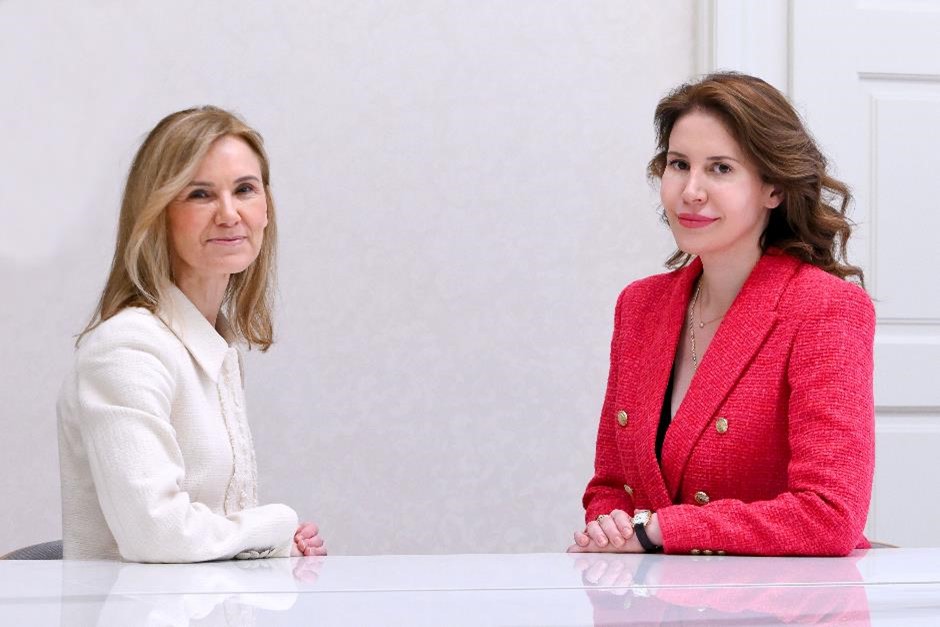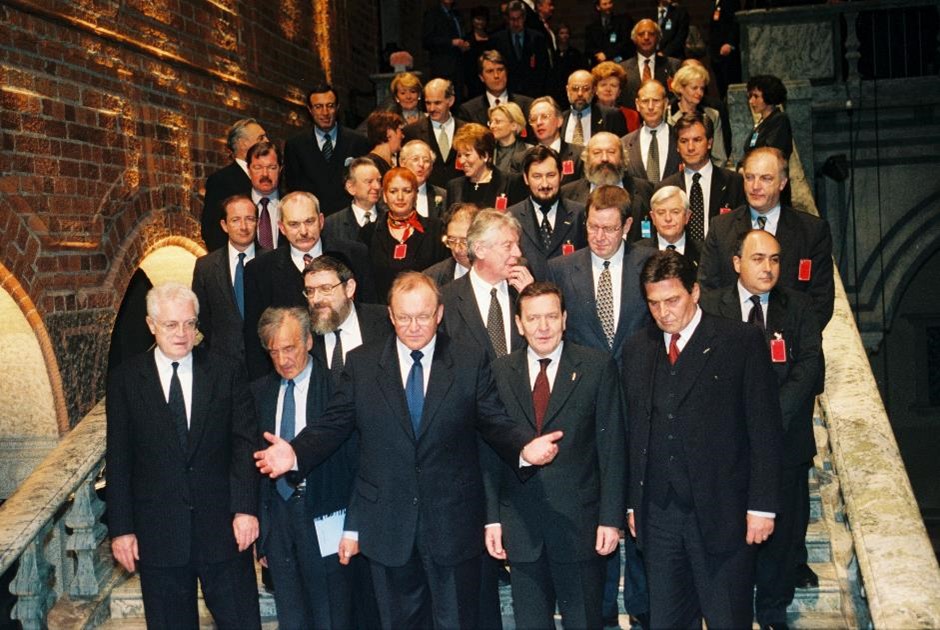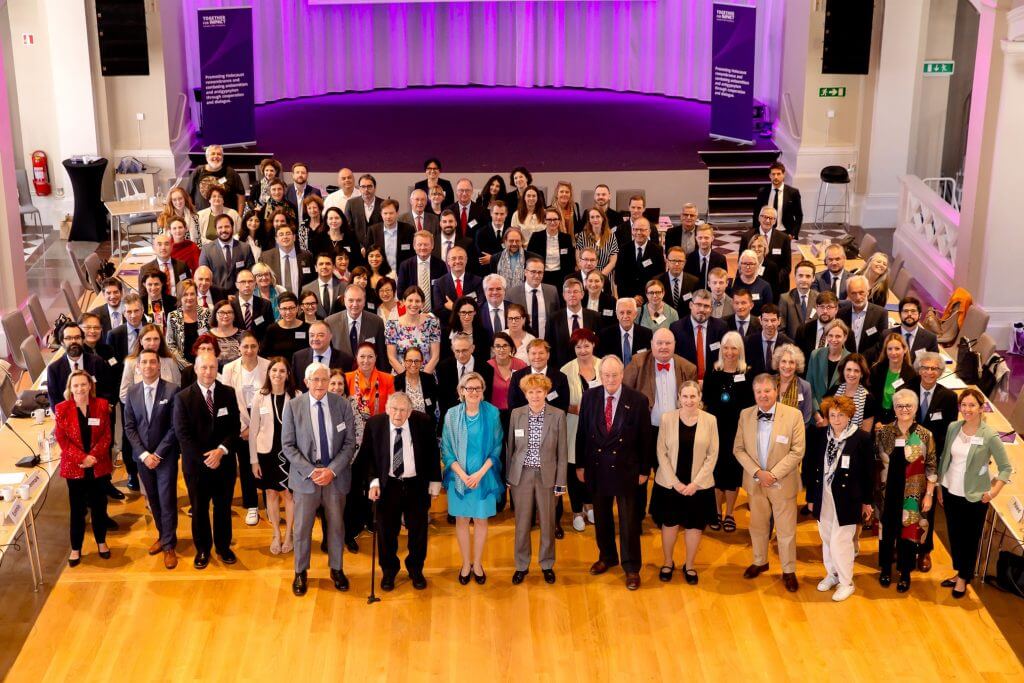


One year of “Together for Impact”: Q&A with IHRA Chair Ann Bernes on the Swedish Presidency
The Swedish IHRA Presidency will come to a close on 28 February. In this Q&A, IHRA Chair Ambassador Ann Bernes reflects on her year leading the IHRA Presidency.
Let’s start by looking at the first days of your time as IHRA Chair. Your Presidency started right after Russia’s invasion of Ukraine, just over a year ago. How has the conflict impacted your work?
When Russia turned to Holocaust distortion to justify its unprovoked – and unjustifiable – aggression against Ukraine, the dangers of distortion were laid bare and a clear link to the IHRA’s mandate was established. One of my first initiatives as IHRA Chair was therefore to make a Statement on Ukraine and Babyn Yar. As the violence has continued, and as Russian leaders have continued to resort to Holocaust distortion to justify the aggression, the Statement has unfortunately remained relevant, one year on.
But, already from the start, we wanted to make sure that the IHRA’s response went beyond words.
The whole IHRA network – our hundreds of experts and political representatives – mobilized to ensure that the IHRA’s work could both be of assistance to Ukraine and help counter the distortive narrative. Implementing the experts’ recommendations is ongoing. Most recently, we have made our three working definitions available in Russian and Ukrainian, to help stakeholders in the region sensitize their surroundings to Holocaust denial and distortion, antisemitism, and antigypsyism.
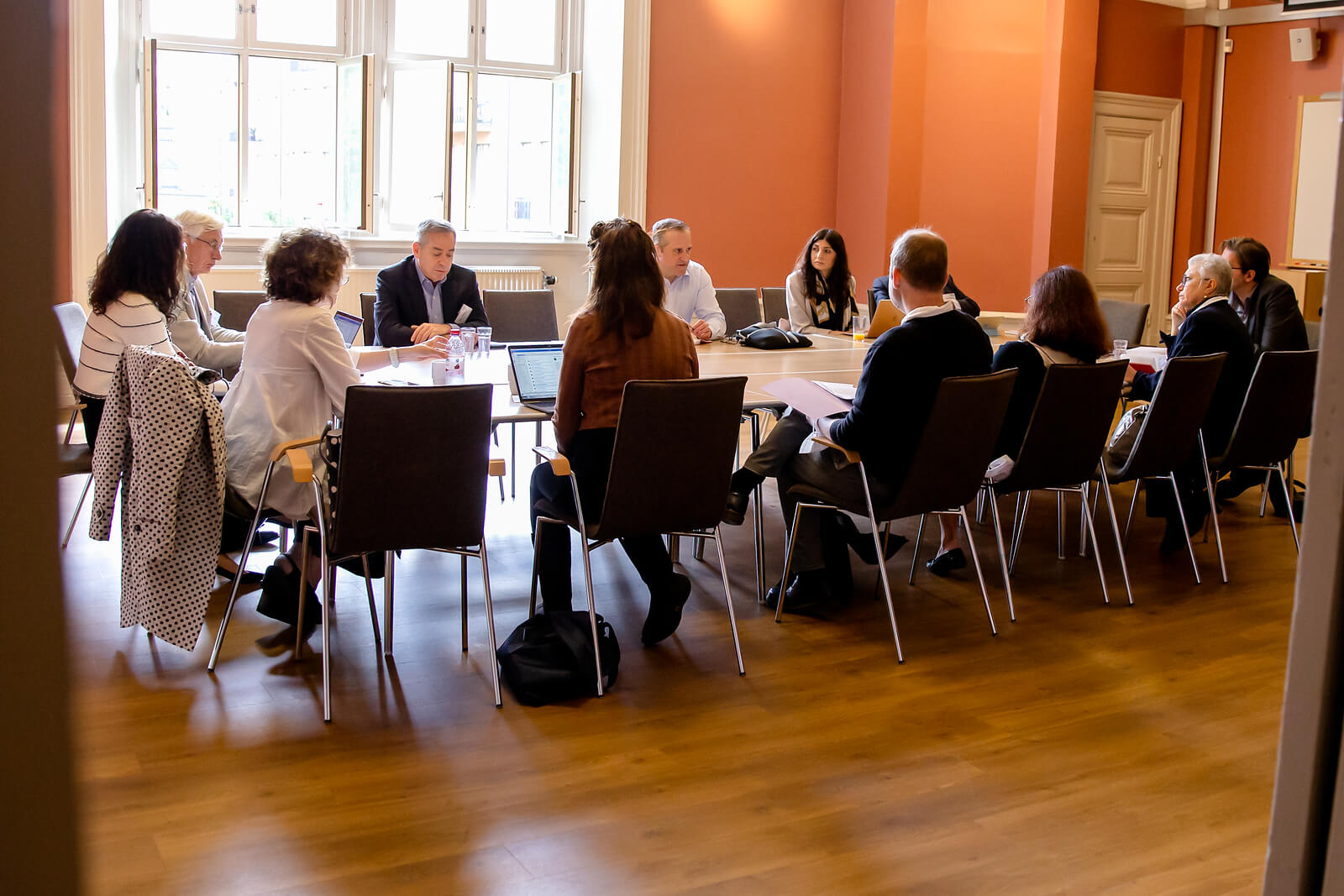
Expert group meeting on Ukraine. Credit: Magnus Liljegren/Government Offices of Sweden
What would you say are the key achievements of the Swedish Presidency? What impact has the Swedish Presidency had on the IHRA as an organization and on the field in general? How did it live up to the motto “Together for Impact”?
The IHRA has truly come together for impact, including in ways we hadn’t foreseen. We started the year with two priority areas: 1) Enhancing the impact of our work, and 2) Strengthening the IHRA as an institution. We are proud that we could achieve significant results in both those areas.
Let me highlight just two examples here:
You’ll remember that the Swedish IHRA Presidency came on the heels of the Malmö Forum, which made it possible for us to follow up on the pledges and show that political promises can be turned into swift and concrete action. The IHRA served as a joint platform where countries could use positive peer pressure to encourage each other to follow through with their pledged activities.
This type of encouragement was supported by a reporting mechanism that showed progress in black and white. Both the Outcome Document and the Follow-Up Report make it easy for stakeholders to follow countries’ progress. But they also show where the emphasis lies thematically, and where gaps remain.
The thinking behind “Together for impact” also guided our approach to the International Conference on the Genocide of the Roma and Combating Antigypsyism. The success of this conference was the result of close cooperation between the IHRA Presidency, Roma communities in Sweden and other countries, and IHRA experts. It also laid the foundation for future work on one of the Malmö Forum pledges made by the IHRA itself: the forthcoming Recommendations for Teaching and Learning about the Persecution and Genocide of the Roma during the Nazi Era.
Of course, none of this would have been possible without securing the financial sustainability of the IHRA, which we were able to do very early on in the Presidency. The IHRA now has a larger budget, a fairer system for its membership contributions and a new possibility to continuously link its strategy and needs to resourcing.
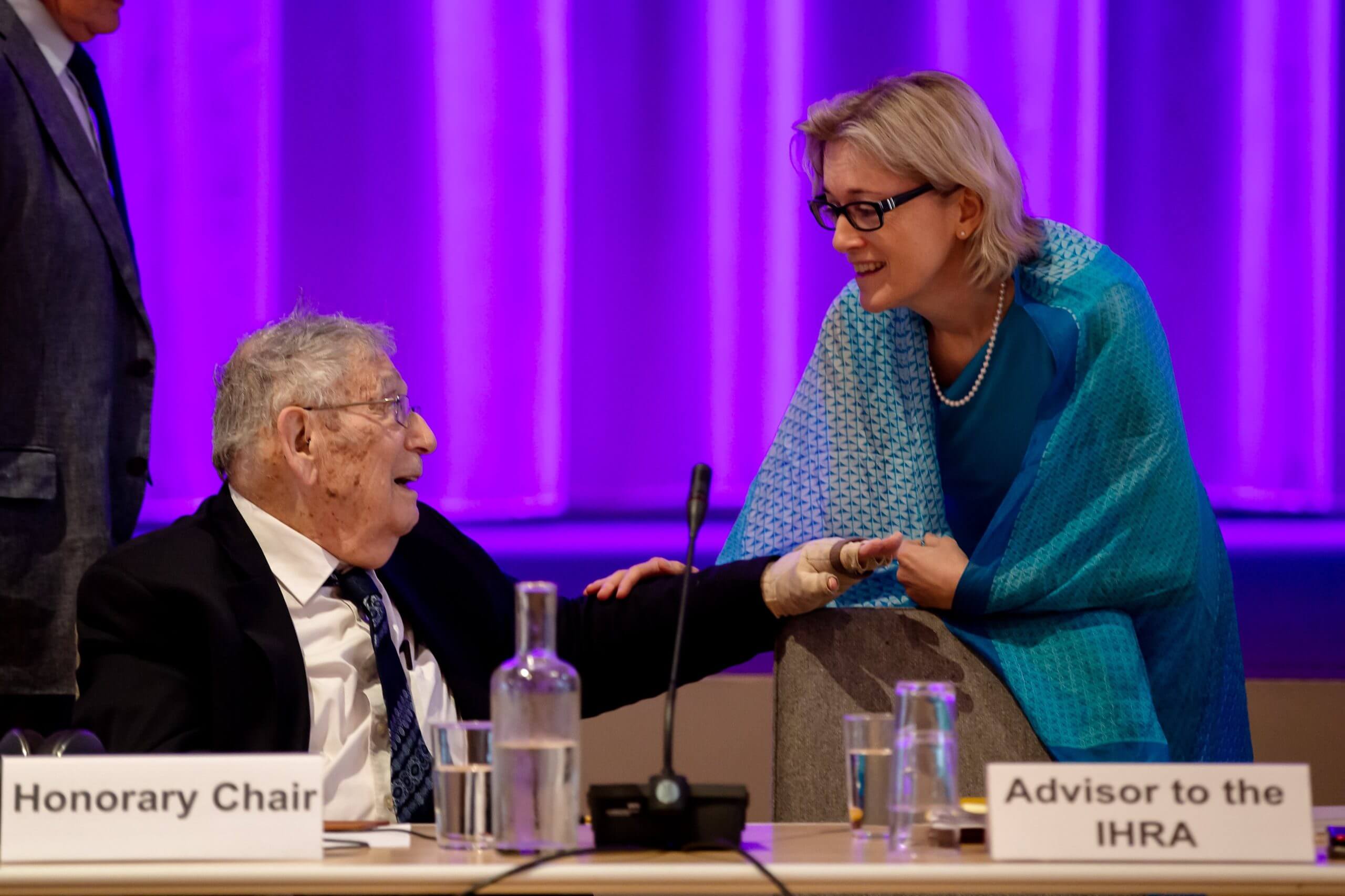
Credit: Magnus Liljegren/Government Offices of Sweden
What are 3 takeaways from serving as IHRA Chair?
- The IHRA can really accomplish a lot in a year.
- Statements should always be backed up by concrete action supported by IHRA experts.
- The IHRA is full of incredibly engaged and knowledgeable people, and this gives me hope!
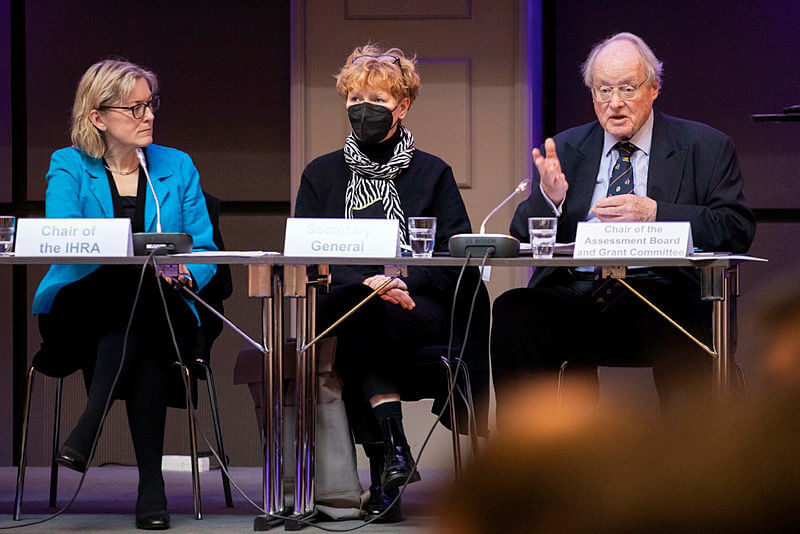
Credit: Ninni Andersson/Government offices of Sweden
Was there anything you set out to achieve that you couldn’t?
Enough to fill another year of activities! We really had to learn how to calibrate our ambitions. The Presidency only lasts one year, and both the Presidency and Permanent Office teams are small. So we had to limit ourselves.
With unlimited resources we would have loved to spend more time developing the IHRA’s collaboration with its Permanent International Partners and engage even more in promoting the topics and tools developed by the IHRA experts, including in the area of archives, especially following the launch of the IHRA’s Guidelines for Identifying Relevant Documentation for Holocaust Research, Education and Remembrance.
We would also have focused more energy on youth and their engagement in this field, including by providing platforms where young researchers and educators could meet, learn from, and be inspired by IHRA experts.

Credit: Magnus Liljegren/Government Offices of Sweden
What advice would you have for the next IHRA Chair?
The IHRA’s experts are what makes this organization truly unique. Make sure that the IHRA’s pool of expertise is maintained so that we can continue to advance this field. The IHRA can achieve a lot in a short time span if everyone is kept in the loop, so do everything you can to keep people together, by working in an inclusive and transparent way, by reaching out to all Heads of Delegations separately, by fostering a spirit of joint ownership and responsibility, and by inviting stakeholders to the table who aren’t there already.
Anything else you’d like to mention.
The IHRA Presidency has left me heartened and humbled. I truly feel that we have made a tremendous impact together and I am deeply grateful for having been able to join forces with such wonderful and impressive colleagues from near and far.
Sign up to our newsletter to
receive the latest updates
By signing up to the IHRA newsletter, you agree to our Privacy Policy
